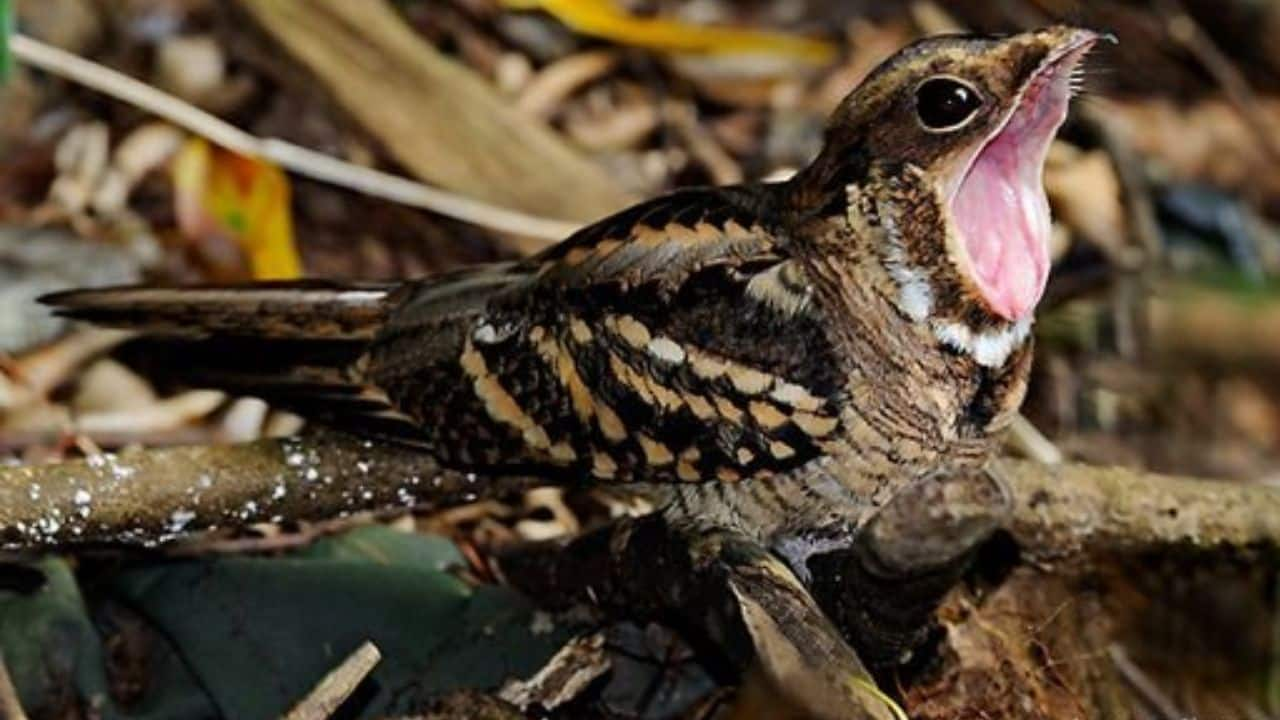
Meet the 'Baby Dragon' Bird: The Great Eared Nightjar looks like a tiny dragon with long tufts, mottled feathers, and glowing eyes—earning its mystical nickname. (Image: @GreatLakesFungi/X)
A Master of Camouflage: Its earthy-toned feathers blend perfectly with fallen leaves and twigs, making it nearly invisible during the day.(Image: @AMAZlNGNATURE/X)
The Largest Nightjar by Size: Measuring 31–41 cm, it’s the largest nightjar species by length and remains elusive in dense Asian forests. (Image: @AMAZlNGNATURE/X)
Where It Lives: Found across India, Sri Lanka, and Southeast Asia, this nocturnal bird prefers lowland and montane forests with thick cover. (Image: @jiffystaypuffed/X)
A Nest Without a Nest: The bird lays a single egg on bare ground, using its camouflage to shield the nest from predators. (Image: @qinchengie/X)
Hidden Parenting Rituals: Both parents take turns incubating the egg, while the chick stays still and hidden among leaves until it’s strong enough to fly. (Image: @Stardate325858/X)
Voice of the Night: Its haunting call—a sharp “tsiik” followed by a “ba-haaww”—echoes through forests at dusk and dawn. (Image: @arthurianmaiden/X)
A Sweet Songbird Too: Surprisingly, the bird also produces gentle, melodic sounds, especially during calm twilight hours to charm mates.
(Image: @arthurianmaiden/X)
The Secret Is in the Syrinx: Its vocal organ, the syrinx, allows the nightjar to produce complex sounds and communicate across the dense forest. (Image: @DrWildlife/X/Luku Ranjan Nath)
Discover the latest Business News, Sensex, and Nifty updates. Obtain Personal Finance insights, tax queries, and expert opinions on Moneycontrol or download the Moneycontrol App to stay updated!









